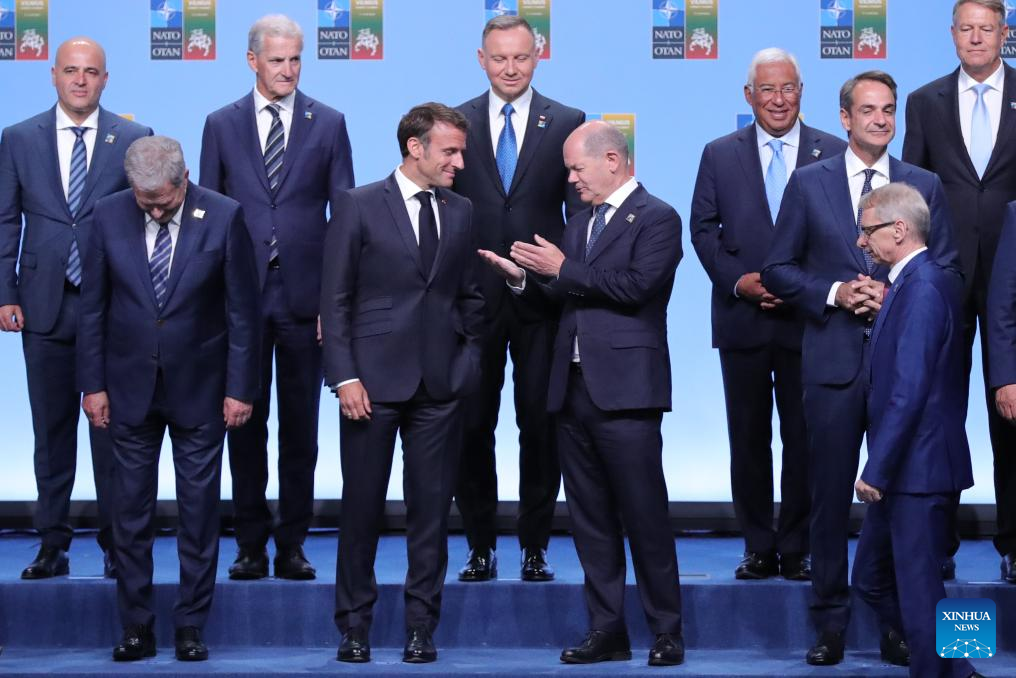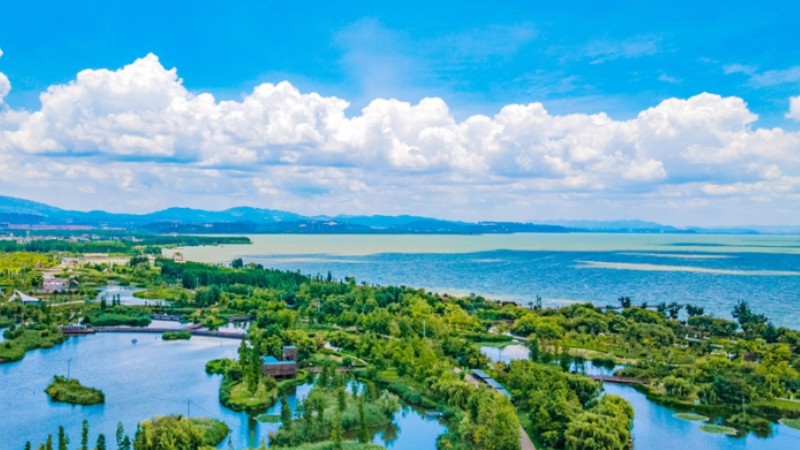NATO-Coalition of the unwilling

Participants pose for a photo during the NATO summit in Vilnius, Lithuania, July 11, 2023. (Xinhua/Zheng Huansong)
The 2023 NATO summit took place from 11–12 July 2023, in Vilnius, the capital of Lithuania. The location is no coincidence, given Lithuania has been one of its most zealous members, even to the point of destroying its relationship with China. Notably in attendance to the summit was South Korean President Yoon Suk-yeol, as well as Japanese Prime Minister Fumio Kishida. Their presence of course reflects the direction the United States endeavours to shuffle NATO towards, transcending it beyond what was a regional security organisation, into a global tool for its own hegemonic ends.
First founded in 1949, the principal objective of the NATO alliance was to secure a means of collective self-defence in the midst of the emerging Cold War. With the powers of Europe having been considerably weakened by World War II, the organisation allowed them to defend each other as well as receive protection from the United States, which stood as an equilibrium to the equally matched Warsaw Pact led by the Union of Soviet Socialist Republic (USSR). However, following the end of the Cold War, NATO did not disband itself given that its primary purpose was achieved.
Rather, the US began to transition it towards being an ideological organisation which served the demands of US hegemony and therefore, even without a given threat, the alliance began to expand itself and impose its will on smaller targets, such as Serbia, or countries in the Middle East and North Africa. In doing so, repeated NATO expansion into the former Warsaw Pact territories created strategic tension and suspicion with the post-USSR Russian Federation, of which the most decisive impact has been the outbreak of the Ukraine conflict in 2022, a devastating event which has jeopardised the safety, security, and wellbeing of the continent.

People take part in a protest against Sweden hosting a large international military exercise and the country striving to become a member of the North Atlantic Treaty Organization (NATO) in Stockholm, Sweden, on April 22, 2023. (Photo by Patrick Ekstrand/Xinhua)
The United States, however, has used this conflict to further NATO’s ends and attempt to impose a “strategic defeat” on Moscow through escalating the situation on the battlefield, and aiming to expand the organisation even further, namely with the admittance of Sweden and Finland, while continuing in lip service to profess a path to membership to Ukraine. In doing so, the US has been able to dramatically expand its influence over Europe in the domain of military and security, and thus it has no intention to try and end the war through peace talks, no matter what the cost may be on Ukraine or other countries in Europe.
In maintaining this context of strategic confrontation, public aspirations have been made to expand the presence of NATO beyond the North Atlantic, and to make it an active participant in East Asia with the goal of targeting and containing China. Hence, the leaders of Japan and South Korea are also present. Tokyo likewise hopes that NATO will establish an “office” in the country. As it is, the United States is dramatically attempting to accelerate its military presence and alliances in the system. It has created new formats, such as AUKUS, while also expanding access to military bases in the Philippines, Papua New Guinea and in addition, planning to deploy a nuclear submarine in South Korea. It thus aims to “multilaterialize” all of these groups to create a comprehensive alliance targeting Beijing, all in the name of preserving hegemony in Asia.
The import of NATO into East Asia will be disastrous for all countries involved from a security perspective. First, it objectively threatens the neutrality of ASEAN states. Secondly, it revives historical memories of European “gunboat” diplomacy, whereby military power was used to impose the will of western powers on Asia states, such as China and others. Thirdly, it threatens decades of stability, shared growth, integration and prosperity in Asia in the name of creating a US led ideological bloc, which like in Europe, seeks to divide so that it can dominate and entrench its own interests.
As such, many countries in Europe have growing reservations about the direction the Ukraine conflict is heading in, including the level of military support to the country, as well as the economic toll they have experienced in terms of energy prices and inflation. Last month, the Eurozone entered recession.?
The continued strengthening of NATO and the escalation of the conflict is a challenge to the independence and strategic autonomy of Europe. Therefore, although the US often demands the image of conformity and unity in such summits, especially in pushing its vision for Ukraine, the reality is far from it. Thus, countries should be wary of exporting this model into the Asia-Pacific, which will not bring peace and security, but the opposite.
Tom Fowdy is a British analyst of politics and international relations with a primary focus on East Asia.
The opinions expressed in this article reflect those of the author, and not necessarily those of People's Daily Online.
Photos
Related Stories
- NATO summit sparks global security concern, internal rifts remain
- Interview: NATO's policies are gross violation of its own charter, int'l law, says Swedish expert
- NATO summit opens in Vilnius amid protests, criticisms
- NATO summit kicks off amid ‘rising divergences, potential risks, long-standing challenges’
- Stoltenberg's term extension exposes NATO's widening splits
- Interview: NATO uses Ukraine as sacrificial pawn in defeating Russia, says German lawmaker
- Sweden moves closer to NATO entry after Turkiye deal
- NATO fails to give timetable for Ukraine membership at summit
- NATO criticized for endangering peace as summit opens
- NATO makes fatal expansion into Asia-Pacific region, says German lawmaker
Copyright © 2023 People's Daily Online. All Rights Reserved.









